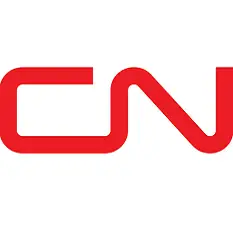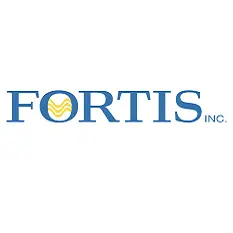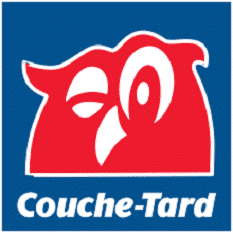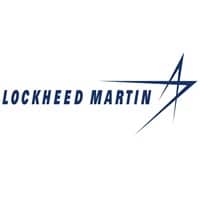The **Registered Retirement Savings Plan (RRSP)** stands out as an essential tool that Canadian investors rely on during their investment adventures.
Not only do these accounts let you accumulate tax-free earnings until withdrawn, but they allow you to take advantage of contributions made during your highest years of taxation to get money back come tax time.
For many Canadians, the question that is consistently brought up is what stocks should they hold in their RRSP? For tax purposes, if you want to add US stocks to your portfolio, the RRSP is often the best place to do so.
Why? Well, US stock dividends have withholding tax applied to them if they are in a taxable account or even a Tax-Free Savings Account.
For this reason, I’m not only going to go over three top Canadian stocks to add to your RRSP, but I’ll cover three US stocks as well to give some variety to this post.
Keep in mind that the RRSP is an account that can have a wide variety of investing strategies. For the purposes of this post, I’m going to stick to blue-chip Canadian and US holdings.
If you’d like to divert to a more growth-based, income-based, or any other investment strategy, just ultimately do what works for you.
What are the best stocks for an RRSP right now?
Canadian National Railway (TSE:CNR)

Canadian National Railway (TSE:CNR) is one of the largest railways in North America, having over 33,000 kilometres of track. Canadian National’s railway spans Canada from coast to coast and extends through Chicago to the Gulf of Mexico.
Railways are often seen as a gauge for Canada’s financial health. A downturn in rail activity usually precedes a wider economic slowdown.
However, CN Rail has demonstrated resilience and growth even amid varying economic landscapes.
The company boasts a notable 28-year streak of increasing dividends and has seen its dividend grow by double-digits over the past five years. Although the stock’s appreciating value has led to a relatively low yield—typically between the upper 1% and lower 2%—this shouldn’t be mistaken for a lack of company strength.
Pursuing high yields can be risky. Despite its modest yield, Canadian National Railway has outperformed the TSX index by a significant margin, delivering annualized returns that even top the S&P 500.
If the economy continues to struggle, we may see CN Rail trade flat or even down while this happens. However, as long-term accumulators, we shouldn’t really be concerned when we’re getting solid companies for cheaper.
Fortis (TSE:FTS)

Fortis (TSE:FTS) is one of the largest utilities in North America and has consistently been one of the best-performing Canadian utilities throughout its history.
Because the utility sector is so heavily regulated, it leads to very reliable cash flows. As the population keeps growing, energy demands will increase, and utility companies are positioned to profit. Fortis has the second-longest dividend growth streak in the country at 50 years.
This proven track record has cemented the company as one of Canada’s best investments and one of the only Dividend Kings, which signals 50+ years of consecutive dividend growth outside of Canadian Utilities (TSE:CU).
Rising rates have no doubt pressured utility stocks, but Fortis has held up admiringly well. This is likely due to the fact that 99% of its earnings come from regulated utilities.
A regulated utility is one where the company owns the generation and means of transmission, practically right up to your meter box. This makes competition practically non-existent, as a competitor cannot come in and take away market share.
The company will then negotiate rates with the municipality that guarantee a profit for the utility but also ensure fair pricing for the consumer.
Fortis has been a stalwart in Canada for many years, and it’s viewed as one of the best blue-chip stocks in Canada.
It won’t blow you away with rapid earnings growth, but it provides an attractive dividend yield and is a very low beta stock, meaning you won’t see much volatility in its share price either.
Alimentation Couche-Tard (TSE:ATD)

Alimentation Couche-Tard (TSE:ATD) truly is a remarkable story. The company operates one of the largest chains of gas stations and convenience stores in the world and has grown into a retail giant over the last few decades.
The company operates one of the largest gas station brands in the world, Circle K. It acquired the company years ago and slowly transitioned most of its “Macs” and “Couche-Tard” stores to Circle Ks.
The company’s main driver of growth is through adding stores and making acquisitions. Considering how fragmented the industry is, this should allow the company to continue to fuel growth despite its already large size.
Sometimes, investing in the simplest business models has proven to provide the best results, and Couche-Tards business is certainly simple. It sells hot dogs, cigarettes, gasoline and other simple products you’d find at convenience stores.
With a 13-year dividend growth streak, a 5-year dividend growth rate of over 20%, and a payout ratio under 12%, this is a company that is in one of the best positions in the country to fuel dividend growth for investors.
With a yield of less than 1%, it’s often overlooked by income seekers. However, we do have to take into consideration overall returns here. And if we do that, Couche-Tard is simply a no-brainer.
There’s plenty of room for growth with Couche-Tard. So, don’t look at a historical chart and believe that somehow Couche-Tard has topped out. Investors have been doing that for a decade now.
Lockheed Martin (LMT)

Lockheed Martin (LMT) is an underrated stock here in North America. It certainly isn’t the flashiest, but it provides products and services to one industry that will simply never slow down. That industry is military spending.
Even during a year when military spending was supposed to be cut back, the US approved a budget of $857B in 2023, higher than the amounts spent in 2022.
It is a sad thought, but the world will often always be in conflict, and the United States will always be spending money to prevent, monitor, and participate in conflicts. And ultimately, this bodes well for Lockheed Martin.
Lockheed Martin is the world’s largest defence contractor and has dominated the Western market for high-end fighter aircraft since it won the F-35 Joint Strike Fighter program in 2001.
Lockheed’s largest segment is aeronautics, but it also has segments in rotary and mission systems, which is mainly the Sikorsky helicopter business; missiles and fire control, which creates missiles and missile defence systems; and space systems, which produces satellites and receives equity income from the United Launch Alliance joint venture.
The company pays a middle-of-the-line dividend in terms of yield, typically in the high 2% to low 3% range, and it has a consistent history of growing that dividend. The company has also managed to triple its earnings per share over the last decade, an accomplishment that few companies the size of Lockheed can claim.
Johnson & Johnson (JNJ)

Johnson and Johnson (JNJ) is a mega-cap pharmaceutical company in the United States. It is so popular that it’s very unlikely you won’t use at least one of its products.
The company is split into three parts: pharmaceuticals, medical devices and diagnostics, and consumer stuff.
Most of the money comes from drugs and devices, which is about 80% of sales. The drug side deals with things like immunology, cancer, neurology, heart and lung stuff, and metabolic diseases.
The device portion is all about orthopedics, surgical tools, eye care, and some other bits. Then there’s the consumer side, which is all about baby care, beauty, oral care, and stuff you buy without a prescription and with women’s health.
More than half of their cash comes from the United States, but they generate plenty of sales globally.
The company generates a significant amount of free cash flow. So much so that it could pay off all of its debts within 2 years if it allocated all of its cash flow towards debt repayment. Obviously, it wouldn’t be wise to do this, but it reflects the strength of the company’s balance sheet and cash flow generation.
It also pays a solid dividend, typically yielding in the 3% range and making up only a third of its earnings.
The company is certainly in the mature stage of its business cycle. However, this isn’t necessarily a bad thing for those who want to buy long-term buy-and-holds for their RRSP.
Microsoft (MSFT)

It would be hard to have a top stock list for the United States that doesn’t include one of the major technology companies. Microsoft (MSFT) has been an absolute beast over the last twenty years and is now making steps forward in the AI space that could allow it to be one of the best-performing US stocks for many years.
The core of the company’s business model is subscriptions for its very popular platforms, like Windows and Microsoft Office products. In addition to this, it has a multitude of cloud products.
Azure, its cloud-based segment, is growing at a rapid pace and is arguably the most impressive cloud-based platform out there.
Then, when you consider the fact it has made significant investments into OpenAI, the company that created ChatGPT, you can see the potential of the company moving forward.
The company often generates north of $60B in free cash flow. To put this into perspective, it wouldn’t even take the company 3 years of cash flow generation to buy Canada’s largest publicly traded company, The Royal Bank of Canada.
In addition to this, its balance sheet is pristine, with very little debt relative to its cash flow generation. Its dividend is consistently growing, and it makes up just 25% of its earnings at the time of writing.
It is hard to imagine a company that has a market cap of over $2.5T growing at a double-digit pace, but that’s exactly what Microsoft is expected to do in the coming years.
What about an exchange-traded fund?
If you’re looking to buy an exchange-traded fund (ETF) for your RRSP, there are a multitude of options you could consider. Exchange-traded funds offer lower fees than traditional mutual funds and are a very popular option among Canadian investors.
I won’t go over too many of the ETFs inside of this article. Instead, I’ll just give you some links to other research we’ve done on ETFs that you could consider for your RRSP.
If you’re looking for US exposure, we have a great article on the best S&P 500 ETFs.
Check out this post if you’re looking for some of the top Canadian dividend stocks in an ETF.
Or maybe you’re looking to diversify away from strictly dividend income and add some fixed income to your portfolio? In that case, you could look at this article on the top Canadian bond ETFs.
Finally, maybe you’re looking to buy a real estate investment trust. In that case, look to this article on the top REIT ETFs.
US stocks inside of an RRSP
If you own US stocks inside your RRSP, the IRS will not apply a withholding tax to the dividends received inside them. However, shareholders will still be charged if you hold them in a tax-sheltered account like the Tax-Free Savings Account (TFSA).
This makes US dividend-paying stocks a perfect candidate for your RRSP and is where I invest most of my own RRSP contribution room. If I don’t have room in my RRSP or TFSA, I often buy them in my non-registered account. Yes, I still pay tax on the capital gains and dividends, but I can also get a foreign tax credit, which is tax-deductible, on the dividends paid.
In terms of Canadian stocks that pay dividends, you could qualify for the dividend tax credit if they’re eligible for dividends.

